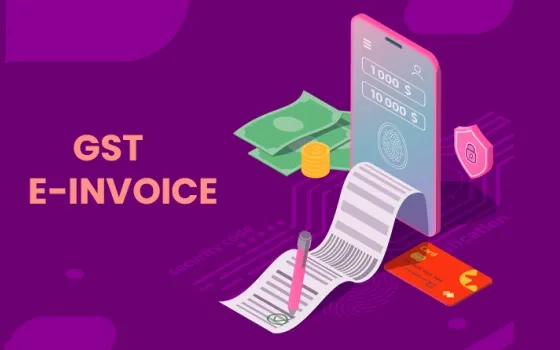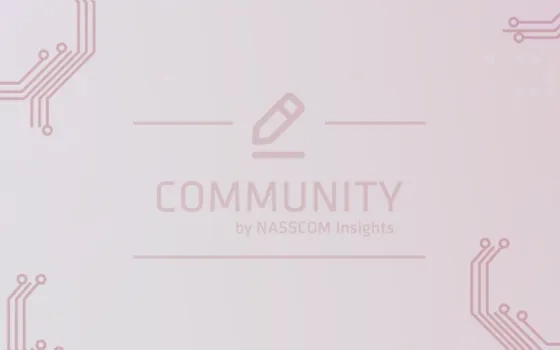The birth of GST in India has completely wiped out the complications of different taxes at different stages and has played a pivotal role in the removal of cases like tax-evasion, bribery and other forms of corruption. Implementing its unique slogan ‘One Nation – One Tax – One Market’ it has successfully covered a long distance in this way too. Consequently, it has had a tremendous impact on the whole Indian Economy.
GST is completely a techno-based, transparent and systematic tax structure that helped the Govt. boost its Revenue at par. In the GST administration, there are various provisions to deal effectively against cases, such as intentional or intentional late filing/non-filing of tax payments, tax-evasion activities, suppressing of facts/details, choosing a wrong format, etc.
Here in this blog, we shall know, in a Ques.-Ans. Format, about some important GST terms pertaining to tax payments under GST administration.
1. What are the payments to be done in the GST regime?
In the GST administration –
- For any intra-state supply, taxes to be paid are the Central GST (CGST- that goes into the account of the Central Government) and the State GST (SGST- that goes into the account of the concerned State Government).
- For any inter-state supply, tax to be paid is Integrated GST (IGST) which has the components of both CGST and SGST.
- Furthermore, certain categories of registered taxpayers are required to pay (to the government account) Tax Deducted at Source (TDS) and Tax Collected at Source (TCS).
- Additionally, wherever applicable, Interest, Penalty, Fees and any other payment may also be charged.
2. Who is subject to pay GST?
In general sense, all registered suppliers of goods and/or service providers are liable to pay GST through a certified and user-friendly cloud-based GST Software in India. However, in a few particular cases like imports and other notified supplies, the liability may be cast on the recipient under the Reverse Charge Mechanism. Moreover, in a few cases, the liability to pay comes to the third person (for instance, E-Commerce Operator is responsible for TCS while the Government Department is responsible for TDS).
3. When GST payment is required to be made?
As explained in Sec. 12 – ‘at the time of supply of Goods’ and as explained in Sec. 13 – ‘at the time of supply of services’. The time is generally the earliest of any of the three following events:
- Receiving payment,
- Issuance of invoice,
- Completion of supply.
Various circumstances envisaged and different tax points have been described in the aforesaid sections.
4. What are the important features of the GST payment procedure?
The payment processes under the proposed GST regime has the following features –
- Electronically generated challan from GSTN Common Portal in all modes of payment and there is no use of manually prepared challan;
- Facilitation for the taxpayers of the hassle-free, anytime-anywhere mode of payment of taxes;
- The convenience of making online payment;
- Logical tax collection data in electronic format;
- Faster remittance of tax revenue to the Government Account;
- Paperless (Eco-friendly) transactions;
- Quick Accounting and reporting;
- Electronic reconciliation of all receipts;
- Simplified procedure for banks;
- Warehousing of Digital Challan.
5. How to make a payment?
GST Payment can be done easily through any of the following methods:
- Tax can be paid through the debit of Credit Ledger of the taxpayer which is maintained on the Common Portal. However, Interest, Penalty, and Fees cannot be paid by debit in the credit ledger.
- Taxpayers are allowed to take the benefits of credit of taxes paid on inputs (i.e. Input Tax Credit) and utilize the same for payment of output tax. However, no ITC on account of CGST can be utilized towards payment of SGST and vice versa. The credit of IGST would also be permitted for making payment of IGST, CGST, and SGST in that order.
- In cash by debit in the Cash Ledger of the taxpayer that is maintained on the Common Portal. Money can be deposited in the Cash Ledger by different modes, such as E-Payment (Internet Banking, Credit Card, Debit Card); Real Time Gross Settlement (RTGS)/ National Electronic Fund Transfer (NEFT); Over the Counter Payment in branches of Banks Authorized to accept the deposit of GST.
6. When should the supplier make the payment of taxes?
Payment of taxes by the normal taxpayer is required to be made by the 20th of the succeeding month. Cash payments will be first deposited in the Cash Ledger and the taxpayer shall debit the ledger while making payment in the monthly returns and shall reflect the relevant debit entry number in his/her relevant Return. As previously mentioned, the same can also be done through Credit Ledger. Taxes for the month of March shall be paid by the 20th of April. Taxpayers, registered as ‘Composition Dealers’ are required to pay tax on a quarterly basis. Timing of payment is from 00:00 Hrs. to 20:00 Hrs.
7. Can the time limit for payment of tax be extended or paid in monthly installments?
No! In the case of self-assessed liability, doing so is not permitted. However, in other cases, the competent authority, as per Sec. 55 of MGL, has been authorized to extend the time period or allow payment in installments.
8. What would happen if the return is filed but the tax is not paid?
In such cases, the Return shall not be considered as a valid return. As per Section 27 (3) of the MGL provides ‘the return furnished by a taxable person shall not be considered as a valid return unless the full tax due as per the said return has been paid’. Only the valid return would be used for Input Tax Credit by the recipient. That means unless the supplier pays the entire self-assessed tax and filed his/her return and the recipient files his/her return, the ITC of the recipient would not be confirmed.
According to Section 28 of the CGST Act., a taxable person who has not furnished a valid return shall not be allowed to utilize such credit till he/she discharges his/her self-assessed full tax liability.
9. Which date is considered as the date for deposition of the tax dues – Date of presentation of cheque or Date of payment or Date of credit of amount in the account of government account?
It is the date on which the amount gets credited to the Government account.
10. What are E-Ledgers?
Electronic Ledgers or E-Ledgers are statements of cash and ITC in respect of each registered taxpayer. Moreover, each taxpayer is required to maintain an electronic tax liability register. Once a taxpayer gets registered on the Common Portal (i.e. GSTN), 2 e-ledgers (Cash & Input Tax Credit) and an electronic tax liability register get automatically opened and displayed on his/her dashboard at all times.
11. What is a tax liability register?
The Tax Liability Register reflects the total tax liability of a registered taxpayer (after netting) for the particular month.
12. What is Cash Ledger?
A cash ledger reflects all deposits made in cash, and TDS/TCS made on account of the taxpayer. This information is reflected on a real-time basis. This ledger can also be used for making any payment on account of GST.
13. What is an ITC Ledger?
Input Tax Credit as self-assessed in monthly returns gets reflected in the ITC Ledger. The credit in this ledger can also be used to make payment of Tax only and not for other liabilities, such as interest, penalty, fees, etc.
14. What is the linkage between GSTN and the authorized Banks?
There is a real-time two-way linkage between the GSTN and the Core Banking Solution (CBS) of the Bank. CPIN is automatically routed to the Bank electronically for verification and receiving payment, and a Challan Identification Number (CIN) is automatically sent by the Bank to the Common Portal that confirms the payment receipt. No manual intervention is involved in this whole process.
15. How to create/modify a GST challan?
To make the payment of taxes a taxpayer can create a challan easily from the GSTN portal. The payment particulars should be entered in by the taxpayer or his/her authorized person. It’s possible to fill up the challan form partially and temporarily “save” the challan for completion at a later stage. This saved challan can also be “edited” before finalization. After the taxpayer finalizes the challan, it can be generated. The remitter also has the option of printing the challan for his/her own record.
Here it is important to note that once a challan gets generated online, it can’t be modified at any cost. However, he/she can save the challan midway for editing.
16. What is the validity period of challan?
A challan will be valid for next fifteen days after its generation and thereafter it will be purged from the System automatically. However, the taxpayer can generate another challan at his/her requirement.
17. What is CPIN?
The term CPIN stands for ‘Common Portal Identification Number’ which is allotted at the time of generation of challan. It is a 14 digit specific number to identify the challan. As already stated above, the CPIN remains valid for a period of 15 days.
18. What is the relevance of CIN?
In fact, CIN is a 17 digit unique number (i.e. 14-digit CPIN + 3-digit Bank Code). CIN is generated by the authorized banks/ Reserve Bank of India (RBI) when payment is actually received by such authorized banks or RBI and credited in the relevant government account linked with them. It is a signal that the payment has been received and the same has been credited to the appropriate government account. CIN is communicated by the authorized bank to the taxpayer as well as to GSTN at the same time.
19. What is the sequence of payment of tax where the taxpayer has liabilities for previous months as well?
Section 35(8) of the CGST Act, prescribes an order of payment where the registered taxpayer has tax liability beyond the current return period. In such a scenario, the order of payment to be followed is – First self-assessed tax and interest for the previous period; then self-assessed tax and interest for the current period; and at last, any other amounts payable including any confirmed demands under section 51. This sequence is required to be followed mandatorily.
20. What is an E-FPB?
The term E-FPB stands for ‘Electronic Focal Point Branch’. These are branches of authorized banks which are authorized to collect payment of GST. Each authorized bank has to nominate only one of its branches as its E-FPB for pan India Transactions. The E-FPB is responsible to open accounts under each major head for all Govt. Total 38 accounts (one each for CGST, IGST and one each for SGST for each State/UT Govt.) need to be opened. Any amount received by such E-FPB towards GST will be directly and instantly credited to the appropriate account held by such E-FPB. For NEFT/RTGS Transactions, RBI acts as E-FPB.
21. What is TDS under GST Regime?
The term TDS stands for ‘Tax Deducted at Source’. As per section 37 of the CGST Act., this provision is meant for Government, Government undertakings and other notified entities engaged in making contractual payments in excess of ? 10 Lakhs to suppliers. While making such payments, the concerned Government/authority is required to deduct 1% of the total payable amount and remit it into the appropriate GST account.
22. How will the Supplier account for this TDS while filing his/her return?
Any amount shown as TDS gets reflected in the electronic cash ledger of the concerned supplier. He/she can utilize this amount towards discharging his/her liability towards tax, interest fees and any other amount.
23. How will the ‘TDS Deductor’ account for such TDS?
The TDS Deductor accounts for such TDS in the following ways –
- Such deductors need to get compulsorily registered under section-19 read with Schedule III of MGL.
- They are required to remit such TDS collected by the 10thday of the month succeeding the month in which TDS was collected and reported in GSTR-7.
- The amount deposited as TDS gets reflected in the electronic cash ledger of the supplier.
- They are required to issue a certificate of such TDS to the deductee just within 5 working days of deducting TDS failing which a penalty of ? 100/day (subject to a maximum of ? 5000/-) shall be payable by such deductor.
24. What is Tax Collected at Source?
This provision, under section 43C of MGL, is applicable only to E-Commerce Operators. Every E-Commerce Operator needs to withhold a certain percentage (to be notified later on the recommendation of the GST Council) of the amount which is payable by him/her to the supplier at the time of making actual payment to the supplier. Such withheld amount should be deposited by such an E-Commerce Operator to the appropriate GST account by the 10th of the next month. The amount deposited as TCS gets reflected in the electronic cash ledger of the supplier.
25. Is the pre-registration of credit card mandatory in the GSTN portal for the GST payment?
Definitely yes! The taxpayer is required to pre-register his/her credit card, from which the tax payment is supposed to be made, with the Common Portal maintained on GSTN. GSTN may also attempt to put in a system with banks in getting the credit card verified by taking a confirmation from the credit card service provider. The payments using credit cards can, therefore, be allowed without any monetary limit to facilitate ease of doing business.
Conclusion
If the annual turnover limit of your business exceeds the prescribed annual turnover limit, opting for a GST registration Number (i.e. GSTIN) is mandatory. And, once the business obtains the unique 15 digits GSTIN, complying with the rules adequately is the only way to run your business smoothly without facing unnecessary complications and heavy penalties.










Comment